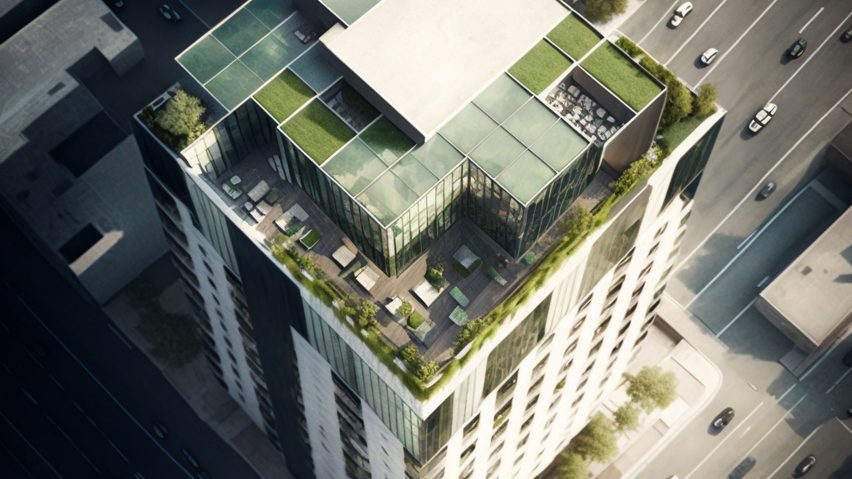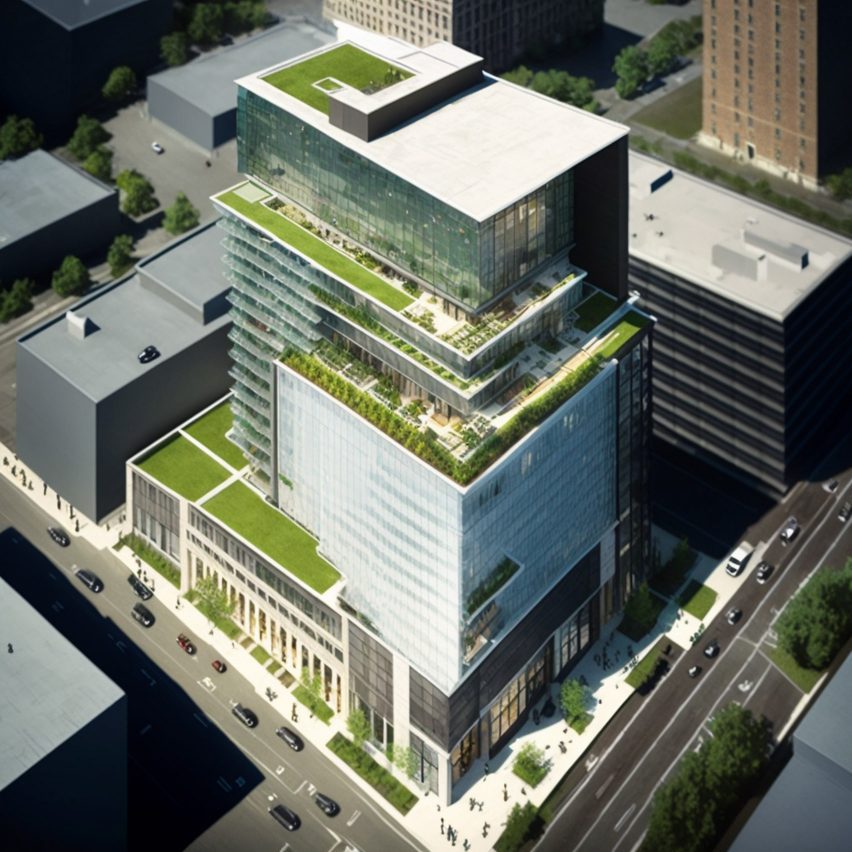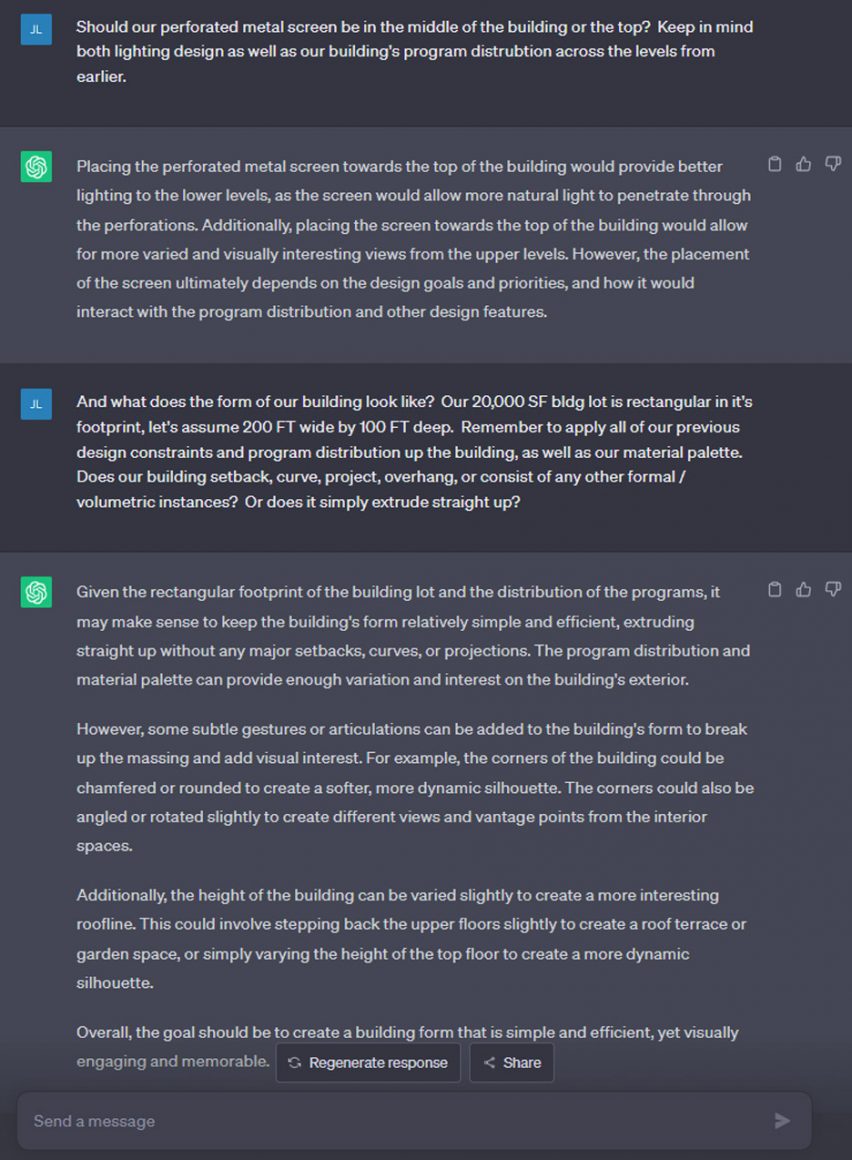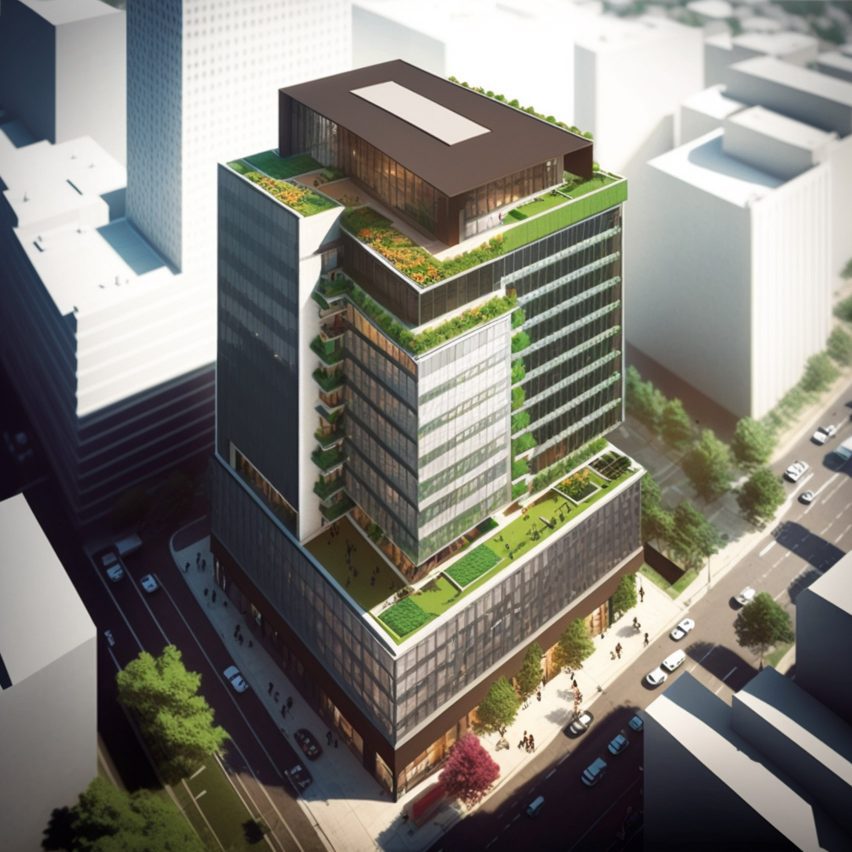ChatGPT Is Being Used By Hickok Cole To Design A 24-story Mixed-use Structure
ChatGPT is being used by Hickok Cole to design a 24-story mixed-use structure. For the purpose of a research project, the architecture firm Hickok Cole employed the artificial intelligence chatbot ChatGPT to design a big mixed-use building with a green roof and a swimming pool.
Author:George EvansJun 26, 202379.1K Shares1.1M Views

ChatGPT is being used by Hickok Coleto design a 24-story mixed-use structure. For the purpose of a research project, the architecture firm Hickok Cole employed the artificial intelligence chatbot ChatGPT to design a big mixed-use building with a green roof and a swimming pool.
Jack Lynch, an architect working on the Hickok Cole project, remarked that the experience had left him "super excited" about the possibilities of artificial intelligence technologies to assist in the process of constructing structures.
The ChatGPT-designed structure, which was intended for an unidentified downtown urban site and does not have a customer, would be 24 stories tall and feature retail, office, residential, hotel, and library space. The building was designed for an urban location in the downtown area of an unspecified city.
He began by analyzing the project's program, then its form, then the appearance of the facade, and finally material choices.
“„I essentially asked ChatGPT to design a building, but I did it in a way that I thought was step-by-step under the guidance of an architect.- Jack Lynch
ChatGPT, which will be launched by OpenAI in November 2022, is a big language model AI system that leverages internet data to react to users' inquiries in a conversation style.
Lynch first used ChatGPT while doing research on novel approaches to vertical mixed-use development as part of Hickok Cole's iLab microgrant program.
He added:
“„It started on a whim, actually. I was really drawn to the conversational style of ChatGPT, so I popped it open and decided to try and gauge how it could be used.- Jack Lynch
The finished structure would include dark stone cladding on the lower floors, transparent walls on the majority of the facade, and perforated metal panels on the top levels.
“„This combination of materials would allow for a modern and sleek aesthetic while also providing some variety in texture and depth to the building's overall appearance. The building's form is relatively simple and efficient, extruding straight up with some subtle gestures or articulations added to the building's form to break up the massing and add visual interest- ChatGPT
ChatGPT said during its discussion with Lynch.
Parts of the roof would be stepped back to form a garden, which would help "create a more interesting roofline," according to the chatbot.
Prompts created using ChatGPT were sent to the text-to-image AI application Midjourney to create project visualizations.
Lynch explained:
“„What I tried to do is create a rapport with the AI engine, and every time it suggested ideas I said, 'alright, let's build off that', in the same way that a supervisor would work with a young designer. And so every time we stepped forward, it would flesh out the design a bit more- Lynch
Lynch gradually added more limits to the project, and ChatGPT responded by coming up with its own design suggestions.
Lynch added:
“„The bot itself would introduce all of these architectural features. So it would say it would have a double height space here, it would implement natural light in these locations, which is not what I asked for. I would just ask it to reiterate the program, I would add a new constraint, and it would develop it and evolve it.- Lynch
According to Lynch, the capacity of ChatGPT to "remember" elements from the debate to inform its replies makes the technology particularly fascinating.
“„It understood that everything we've done to that point was a building block for the next step, in the same way that architects and designers work. It was keeping a record and it was modifying the record if there were constraints added later on if it felt there needed to be modifications. So to me that was just very exciting, because it was suddenly a tool that works to a level that current architecture tools don't have.- Lynch
He said.
However, ChatGPT made several mistakes during the procedure. For example, for the building's layout, it recommended workplaces on the bottom levels, followed by multifamily living above and then additional office space further up.
“„That would never happen. That's not efficient. After some back and forth with the bot it made its correction and moved forward. Later on in the conversation, I said, 'let's assume that the developer was very interested in this idea of split office space, would you reintroduce it?' And it said, 'No, because considering what we've talked about previously, it makes more sense to do it this way',- Lynch
said Lynch.
In other circumstances, it could forget about limits and need to be reminded of them, or it might forget about its own concepts and need to be reminded of them.
Nonetheless, Lynch feels that the technique has significant architectural applications.
“„I'm super excited that I can use it as a starting point to spur design ideas, in the same way that colleagues of mine in the firm can go into a conference room and charrette out ideas at the beginning of a project . That is a great way to get past any sort of designer's block, to look at precedents in a super fast way that saves you hours of research time.- Lynch
He predicts that specialized AI chatbots will begin to be included in architect software.
“„It just saves you so much time and it makes things so much more efficient, in the way that computer-aided design made things more efficient.- Lynch
Since Lynch began working with ChatGPT, OpenAI has released GPT-4, a new, more powerful version of the model that is presently only available to premium customers.
Some have expressed concern about AI's ability to eliminate architectural positions, like ChatGPT, but Lynch remains positive about the technology.
“„I think it's a little naive to assume that an advanced technological leap is going to suddenly put your profession at risk, there are countless moments in time where we've had technological leaps that have enhanced the design profession for the better.- Lynch
Lynch claimed that AI may spark a new era of architectural creativity.
“„When computer design started in the 1960s and '70s there was a fear that the craftsmanship of the architect or the pen-to-the-paper that really led to true inspiration was going to be gone, but we had a huge renaissance of different architecture stylesthat came about,- Lynch
he said.
“„I think we're going to see that again. It's putting design into a different user's hands, and that doesn't mean that architecture is at risk, it means that it's going to be viewed a bit differently, and there are going to be people who come in and start to play around with it,- Lynch
he continued.
“„And maybe they're not trained in architecture, but that's okay, it doesn't concern me, because if they're using these tools the trained architect has the edge.- Lynch
Final Words
Hickok Cole is now conducting more studies to determine whether ChatGPT may be utilized to help with actual projects. Lynch is investigating how AI model replies change depending on how queries are made in order to achieve more consistent outcomes.
In April, Zaha Hadid Architects principal Patrik Schumacher stated that the company is already employing AI picture generators to assist generate early project concepts.
Jump to

George Evans
Author
George Anderson, an exceptional architectural designer, envisions and brings to life structures that transcend the realm of imagination. With an unwavering passion for design and an innate eye for detail, George seamlessly blends form and function, creating immersive spaces that inspire awe.
Driven by a deep appreciation for the interplay of space, light, and materials, George's innovative approach redefines the possibilities of architectural design. His visionary compositions leave an indelible mark, evoking a sense of wonder and transforming the built environment.
George Anderson's transformative designs and unwavering dedication continue to shape the architectural landscape, pushing the boundaries of what is possible and inspiring generations to come.
Latest Articles
Popular Articles



